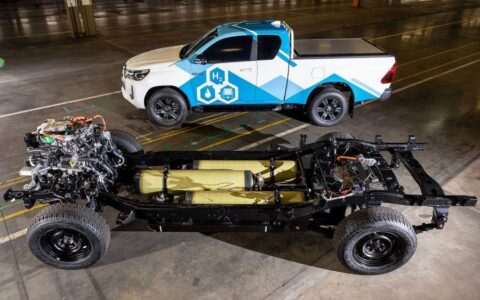Toyota Motor Europe’s head of powertrains, Timothy D’Herde, said: “We tried to keep the ground clearance of the regular Hilux. However, customers said they wanted to see and try something as soon as possible, so we used proven Mirai components, which have had an impact on ground clearance.
“Now we need to see the vehicle in its natural habitat. Some customers may say they need four-wheel drive, in which case we will need more ground clearance.”

The modularity of the fuel stack is one of its most appealing features, said D’Herde. So is its flexibility, it having been used elsewhere in applications ranging from static power generation to powering converted VDL Group delivery trucks for Toyota’s logistical activities.
Its installation in the Hilux raised all sorts of challenges, however, explained D’Herde: “The Hilux’s engine bay tapers from front to back, while to help the water to drain, the stack is angled downwards slightly.
“All this made fitting ancillaries such as the air compressor, intercooler and air cleaner a real challenge. Cooling power is critical: in an internal combustion engine, a lot of the heat goes through the exhaust, but the exhaust in a fuel cell stack is [only] water, so we need a lot of heat exchangers to manage the heat. We designed a bespoke radiator to help with that.”
